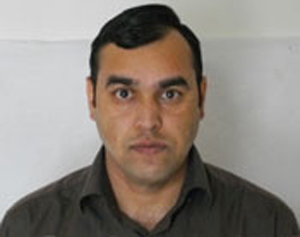Program Information
Constancy of Time Lag Relationship Between External and Internal Signal in Abdominal Tumor Sites
R Regmi*, D Lovelock, P Zhang, H Pham, J Xiong, E Yorke, K Goodman, A Wu, G Mageras, Memorial Sloan Kettering Cancer Center, New York, NY
MO-F-WAB-2 Monday 4:30PM - 6:00PM Room: Wabash BallroomPurpose: To investigate constancy, within a treatment session, of the time lag relationship between implanted markers in abdominal tumors and an external motion surrogate.
Methods: Six gastroesophageal junction and three pancreatic cancer patients (IRB-approved protocol) received a respiration₋correlated CT (RCCT), and two cone₋beam CTs (CBCT), one before and one after the treatment. Time between initial and final scan varied from about 1 to 3 h. Each patient had at least one implanted fiducial marker near the tumor. In all scans, abdominal displacement (Varian RPM) was recorded as the external motion signal. In-house software tracked fiducials, representing internal signal, in CBCT projection images and amplitude-sorted RCCT. For each set of projection images, time lag between internal and external signals was found by maximizing the correlation coefficient in each breathing cycle and averaging over all cycles. For the RCCT, these quantities were calculated for the 1₋2 cycles during which the fiducial was imaged.
Results: Mean ± standard deviation in time lag, over all scans and patients, was 0.10 ± 0.07 s (range 0.01 ₋ 0.36 s). External signal lagged the internal in 20/27 scans. Change in time lag between pre₋ and post₋RT CBCT was 0.06 ± 0.07s (range 0.01 ₋ 0.22 s), corresponding to 3.1 ± 3.7% (range 0.6 ₋ 10.8%) of the gate width (range 1.6 ₋ 3.1 s). Including the RCCT scan, change in time lag increased to 6.5 ± 5.4% (range 0.2 ₋ 16.1%) of the gate width, and in three patients, change in time lag exceeded 10% of the gate width.
Conclusion: Time lag between internal and external signal is small compared to the treatment gate width in all patients. Change in time lag within a treatment session, inferred from pre to post₋RT measurements is also small, suggesting that a single measurement at the session start is adequate.
Funding Support, Disclosures, and Conflict of Interest: NIH/NCI award R01 CA126993 and a research grant from Varian.
Contact Email:


